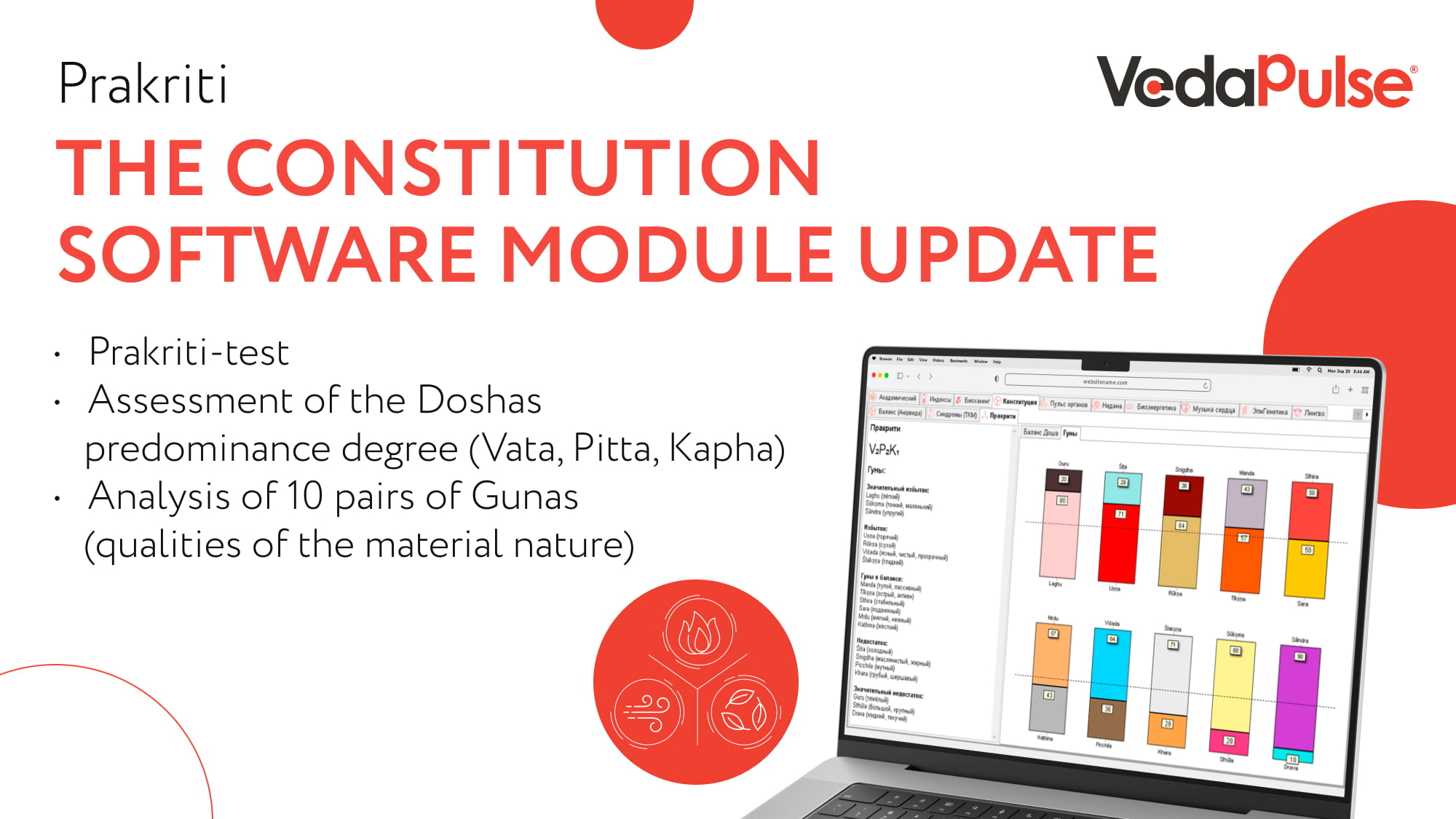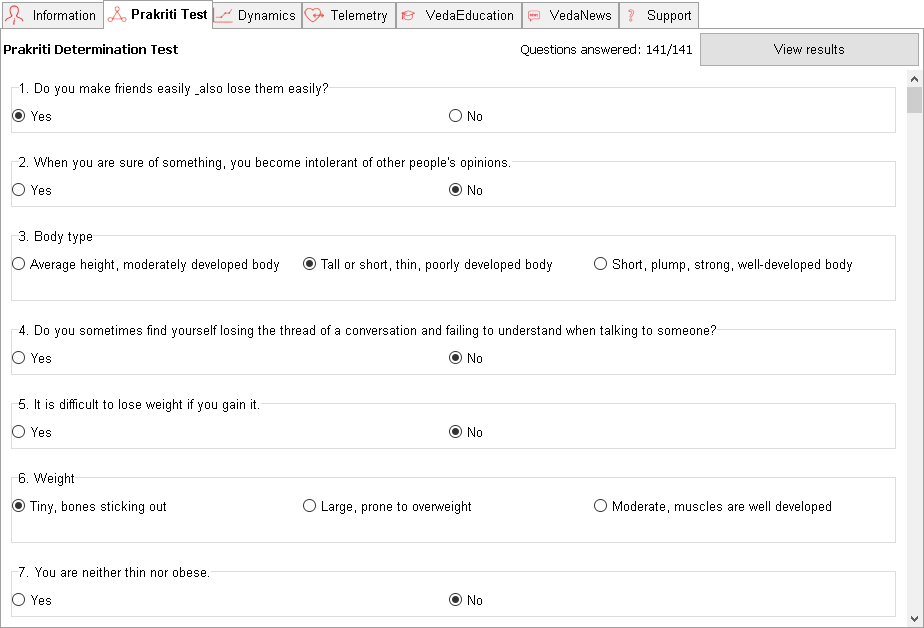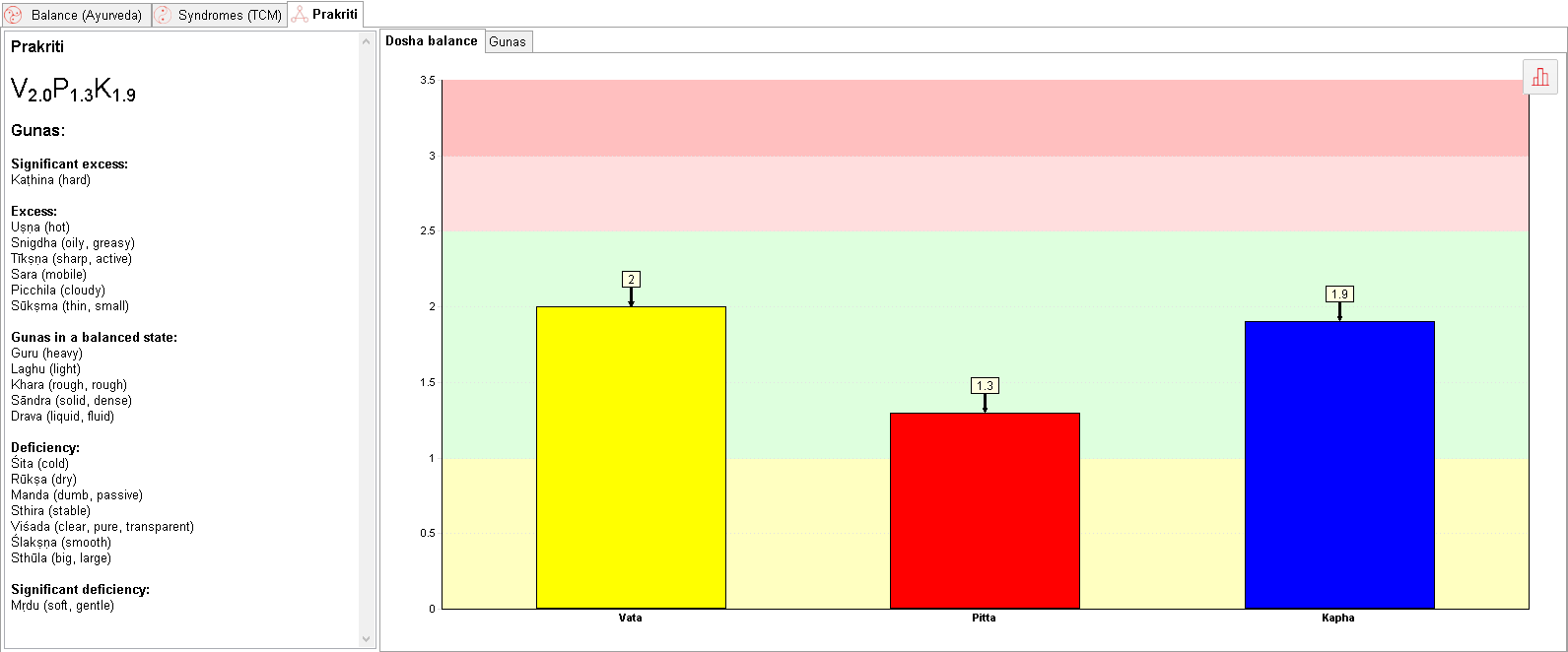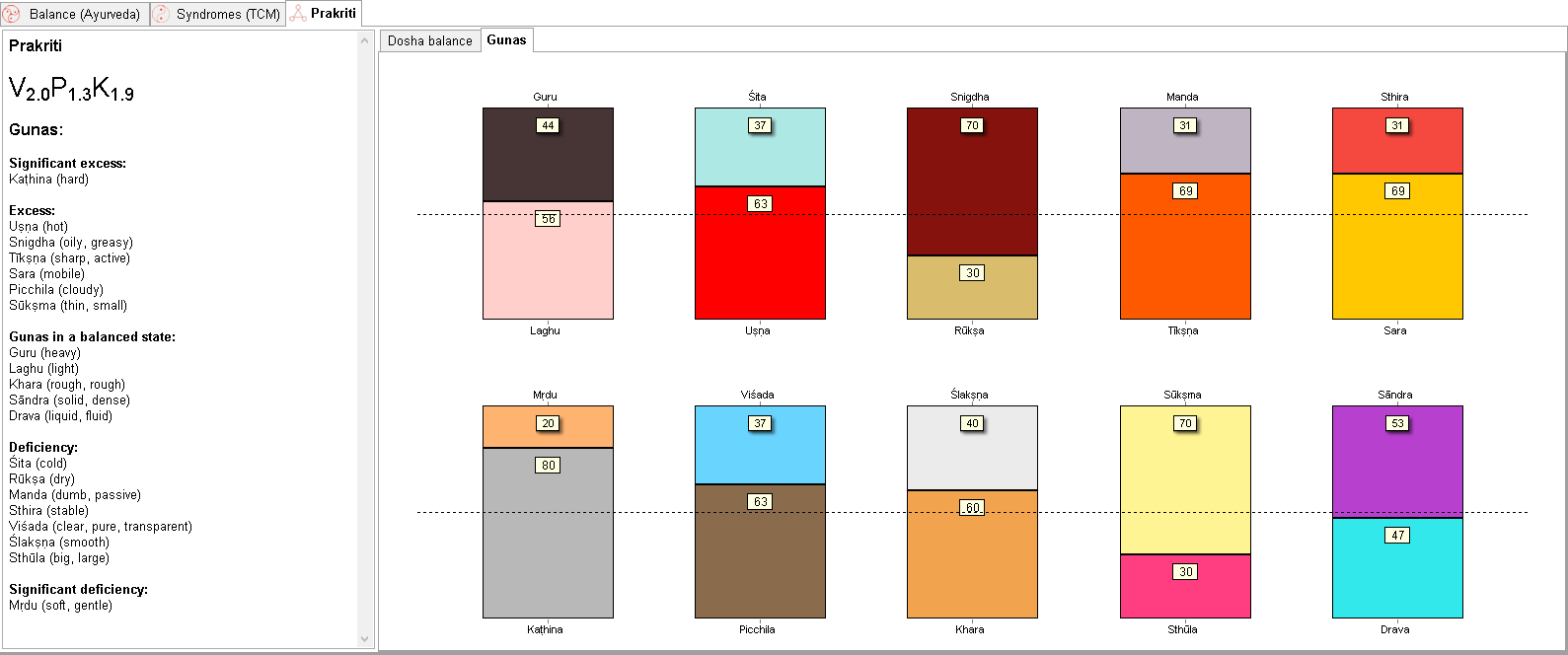In Ayurveda, Prakriti means the individual, innate constitution of a person. As you know, in Ayurveda the constitutional (individual typological) approach is the basic tool necessary for the wellness practice. In order to choose the optimal lifestyle regime, to preserve and multiply the health resources given to a person by nature, it is necessary to know one's Prakriti

There are three main methods of identifying Prakriti
One is Eastern Jyotish astrology, where the principles of assessing Prakriti are associated with the position of the planets in a person's birth chart that correspond to a particular constitution. For example, it is believed that some planets are clearly associated with the Vata constitution - Saturn, some with the Pitta constitution - Mars and the Sun, and others with the Kapha constitution - Venus, Moon and Jupiter. The Ascendant and other nuances are also taken into account.
Another well-known but rarely used method of identifying Prakriti due to its complexity is palpatory pulse diagnosis. The guru of pulse diagnosis, Dr Vasant Lad, states that it is possible to assess Prakriti at the 7th pulse level, but there are few specialists in the world today who manage it.
The third most popular and widely used method of identifying Prakriti is the clinical interview.
Based on this method, the developers of VedaPulse have released updates to the Constitution module. The new section of the module is called Prakriti and consists of two parts: Prakriti Test and Results. However, the main innovation in the update was not even the addition of a Prakriti Test, encouraged by the test validated by the Ministry of AYUSH in India, which is responsible for the development of education, research and dissemination of traditional healing systems. The most important and unique update: the user of the VedaPulse system can now visually assess the Guna balance, which is the root cause of Doshas and Subdoshas imbalance. Knowing the Guna balance helps to form a deeper understanding of the state of biochemical and physiological processes in the body.

How to identify Prakriti using VedaPulse?
Find the "Test" tab in the top horizontal menu and answer the 141 test questions. Take your time. Don't worry, the answers can be changed. Try to assess yourself as objectively as possible when answering the questions. Don't be tempted to see yourself as you wish you were. Dr Robert Svoboda recommends to involve someone who knows you well in the test passing so that your assessment is as accurate, honest and objective as possible. You can view the test results in the Constitution module under the Prakriti tab, which contains 2 sections - Doshas and Gunas.
The Doshas section presents a bar chart of the human constitution. The diagram is divided into 3 areas, coloured yellow, green and red, according to the degree of predominance of one or another dosha (yellow - Dosha kshaya, Dosha is decreased, red - Dosha is excited).

The Gunas section presents 10 pairs of Gunas - qualities of the material nature - with an indication of the proportion of each Gunas:
- Guru (heavy) - Laghu (light)
- UṣṇA (hot) - Śita (cold)
- Rūkṣa (dry) - Snigdha (oily, unctuous)
- Tīkṣṇa (sharp, active) - Manda (dull, passive)
- Sara (mobile) - Sthira (stable)
- Kaṭhina (hard) - Mṛdu (soft, gentle)
- Picchila (cloudy) - Viśada (clear, pure, transparent)
- Khara (rough, coarse) - Ślakṣṇa (smooth)
- Sthūla (gross, big) - Sūkōma (subtle, small)
- Drava (liquid) - Sāndra (solid)
To date, VedaPulse is the only system in the world capable of assessing the Guna balance. When you hover over the area of a particular Guna, you will see a tooltip with the name of Guna, its quality, the value of the fraction and the main action. Knowing the Guna balance is necessary for expert work with a patient, and allows you to choose the therapy more accurately. For example, to prescribe herbs based on the principles of Dravya Guna, taking into account the patient's Guna balance.

In the text field you can read the report about the constitution formula (on a scale from 0 to 3.5 cu. in accordance with the concept of the guru of pulse diagnosis Dr. Vasant Lad), about Gunas in the order of their predominance (excess), balance and deficiency.
NOTA BENE! Regardless of the test results, the data about Prakriti should not be perceived as something pathological. There are no evaluative concepts of "bad" or "good" in the concept of Prakriti. Whatever the results of the test, this is simply a given, your nature, which is important to take into account when assessing Vikriti (pathological deviation of the Dosha balance from the initial Prakriti).